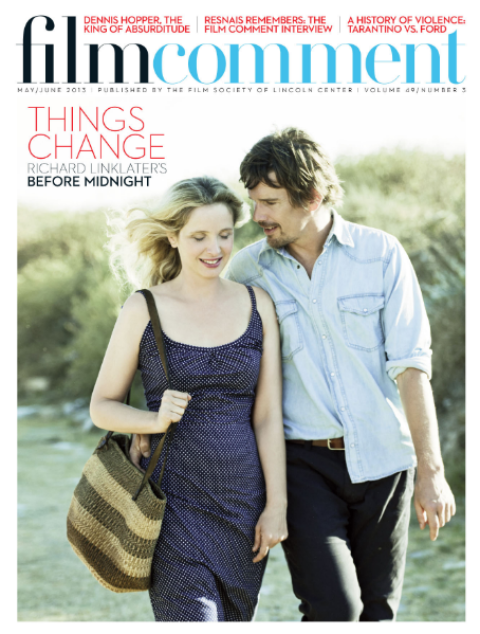
“Show me your world, Chris,” says an unworldly Englishwoman to her lover as they embark on a trailer tour of the scenic North at the deceptively jaunty start of Sightseers. Tina (Alice Lowe) is a gonk-loving knitter (of pink wool lingerie) and dog-walker who lives at home with her possessive mother; Chris (Steve Oram) is an “anorak” (i.e., nerdish hobbyist) who lies that he has taken a sabbatical to write, whereas in fact he has been made redundant. Devised by acting-writing comedy team Lowe and Oram and co-scripted by Amy Jump, director Ben Wheatley’s professional and personal partner, the movie pokes fun at the social limitations of these lumpen Midlanders without sneering at or patronizing them.
The misfit pair will eventually visit the National Tramway Museum in Crich, the Pencil Museum in Keswick, and the more mystical Castlerigg stone circle and Honister Pass, among other tourist destinations. Wheatley has said that he likes such spots, but any sense that Sightseers is a mere celebration of English heritage culture immediately evaporates when Chris runs over a litterbug at Crich, the first in the series of murders he and his fellow natural-born killer carry out as they travel the green and pleasant English badlands. The focus of the story is less the carnage, however, than the couple’s emergent incompatibility, which imbues it with a faint melancholy. The use of “Tainted Love” on the soundtrack is ominous, that of Frankie Goes to Hollywood’s “The Power of Love” ironic.
As the newly Dionysian Tina becomes more assertive, she introduces an element of chaos into the murder spree that offends the uptight Chris, who in turn becomes more neurotic. This aligns them with pontificating Keith and childlike Candice-Marie, the camping couple in Mike Leigh’s 1976 television film Nuts in May. That memorable plein air tragicomedy of manners is the key analogue to Sightseers, though Wheatley says he did not see it until just before shooting began. A superficial resemblance between Leigh’s and Wheatley’s caricaturing makes comparisons between their films inevitable, though Wheatley’s movies are closer in spirit to Edgar Wright and Simon Pegg’s Shaun of the Dead (featuring Lowe) and Hot Fuzz, both produced, as was Sightseers, by Nira Park.

Each Wheatley film is an inventive mixed-genre riff: Down Terrace (09), a kitchen-sink crime drama; Kill List (11), a blend of domestic soap, urban thriller, and Wicker Man–like horror; and Sightseers a road movie-cum-black comedy. Justifiable murder is their unifying trope. Chris and Tina’s rampage likens them to the lugubriously murderous crime family of Down Terrace and the Iraq War veterans turned dysfunctional hit-men of Kill List.
The movies are fantasies—Sightseers brighter, poppier, and less linear than the others—that sanction killing as social purge. Down Terrace’s victims are the son’s oppressive parents and their lowlife associates. Kill List’s hit men slaughter a priest, child pornographers, and members of a witch’s coven. As well as the litterbug, Chris offs a smug middle-class author of psychogeography books (whose success only highlights Chris’s inability to write), and a National Trust conservancy bore. Tina pushes a bride-to-be into a ravine after she kisses Chris at her hen party, arbitrarily runs down a cyclist, and eliminates a low-tech inventor who befriends Chris. Nothing if not egalitarian, they target victims across the classes.
Although Chris can be as frenzied as Kill List’s Jay, both he and Tina are capable of killing as casually as they (and other Wheatley characters) might say “I wouldn’t mind a cup of tea.” Our enjoyment of their banal crimes makes us complicit in the violence, though Wheatley is scarcely being as didactic or manipulative as the Michael Haneke of Funny Games. Sightseers is a safety valve, a comic venting of frustration on behalf of anyone who has fleetingly imagined killing someone annoying. The film doesn’t glorify murder or stain the English countryside, though it’s more likely to elicit reluctant smiles of recognition than belly laughs.








